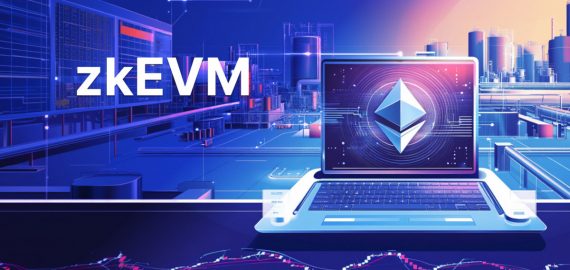Supra’s Bold Vision, A High-Speed, Multi-VM Future Without the Latency of Modular Blockchains


In Brief
While much of crypto chases modularity, Supra is taking the opposite path with a vertically integrated, high-speed Layer 1 that Co-founder Jon Jones calls a “mega-monolith” built for superior execution and DeFi performance.
When most of the crypto world is shouting “modularity,” Supra is going the other way—vertically integrated, high-speed, and natively interoperable. Co-founder and CBO Jon Jones calls it the “antithesis of modularity”, and he believes it’s the key to better DeFi.
“We’re building what we call an intralayer architecture—a high-throughput Layer 1 with native oracles and system-level automation baked right in,” says Jones. “It’s a mega-monolith that prioritizes execution quality above all.”
Native Oracles at the Validator Level
Supra’s most distinct advantage lies in its architecture: system-level oracles that are embedded directly into the validator layer. That means DeFi applications don’t need to rely on external protocols like Chainlink or Gelato for price feeds or automation.
“Every time you use an external service, you introduce latency. That latency degrades execution quality,” Jones explains. “By baking oracles and automation into our validators, we remove that latency—and improve outcomes for DeFi users.”
This vertically integrated model avoids the modular stack’s biggest trade-off: composability at the cost of speed and reliability.
Multi-VM Support: Build Once, Deploy Everywhere
Supra currently supports the Move VM, with EVM compatibility launching on testnet imminently, and Solana VM support expected later this year. A Cosmos VM is also in the pipeline.
“The idea is simple,” says Jones. “A developer who built their DeFi app on Solana can now deploy on Supra’s Solana VM—same app, broader reach, better infra.”
Multi-VM support allows devs to port apps across ecosystems with minimal friction, all while running on the same unified validator set. This means cross-VM apps, cross-chain liquidity, and truly flexible developer tooling—a rare combination.
And with Supra Nova, their native cross-chain bridge, developers don’t just get portability—they get low-latency cross-layer messaging between chains, opening up powerful cross-chain dApps.
Move Language, Maximum Onboarding
While Supra is VM-agnostic, it has a soft spot for Move—the language that originally came out of Meta’s Diem project.
“Move is a favorite among Web2 devs. It’s easy to learn, safe, and highly composable,” says Jones. “We chose Move to lower the onboarding barrier for the next generation of Web3 developers.”
Supra was the third Move-based Layer 1 to launch Mainnet, behind Aptos and Sui, and it’s already seeing adoption: 20+ apps live, with 100+ more in the pipeline for EVM.
System-Level Automation: “If This, Then That” for Web3
One of the more exciting features is Supra’s automation layer, now live on testnet. Think of it as on-chain “If This, Then That” logic—but handled by the validators themselves.
“Our validators aren’t just confirming blocks,” says Jones. “They’re also running automation logic for apps, natively.”
That opens the door to fully automated dApps, scheduled functions, and much more—all without external services, and again, without latency.
The Supra Vision: One Chain to Rule Them All?
While most of Web3 is splitting across dozens of modular L2s, Supra is betting on a vertically integrated Layer 1 that does it all: consensus, computation, automation, oracles, and cross-chain messaging.
“The modular world has a lot of moving parts, and that introduces risk and lag,” says Jones. “We’re building the Supra monolith—high throughput, low latency, and system-level everything.”
Supra’s anti-modular stance is bold—but in a market that demands speed, cost-efficiency, and composability, it may be just what builders need.
And with Move, EVM, and Solana devs all able to deploy on a single chain, Supra could quietly become the unified playground for the multi-chain future.
Disclaimer
In line with the Trust Project guidelines, please note that the information provided on this page is not intended to be and should not be interpreted as legal, tax, investment, financial, or any other form of advice. It is important to only invest what you can afford to lose and to seek independent financial advice if you have any doubts. For further information, we suggest referring to the terms and conditions as well as the help and support pages provided by the issuer or advertiser. MetaversePost is committed to accurate, unbiased reporting, but market conditions are subject to change without notice.
About The Author
Victoria is a writer on a variety of technology topics including Web3.0, AI and cryptocurrencies. Her extensive experience allows her to write insightful articles for the wider audience.
More articles

Victoria is a writer on a variety of technology topics including Web3.0, AI and cryptocurrencies. Her extensive experience allows her to write insightful articles for the wider audience.

















































